
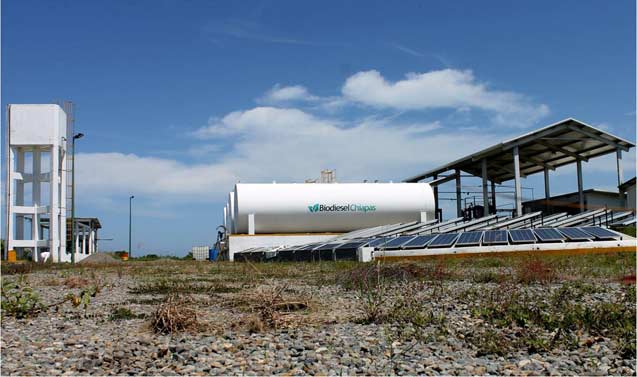 Biofuel refinery in new industrial zone in Tapachula, an exporting city on the coast of Chiapas. With plans for expansion, there is a coffee plant to its left and an oil refinery being built on its right. Mexico is currently laying the foundation of a biofuel exporting industry. (Photo: Jennifer Coute-Marotta)
Biofuel refinery in new industrial zone in Tapachula, an exporting city on the coast of Chiapas. With plans for expansion, there is a coffee plant to its left and an oil refinery being built on its right. Mexico is currently laying the foundation of a biofuel exporting industry. (Photo: Jennifer Coute-Marotta)
All names are fictitious as sources requested anonymity out of fear of retaliation. Anonymity and people’s requests that no pictures be taken were prerequisites for attaining interviews. No one wanted to go on record in connection to a new, politically charged, government program.
Consuela’s identity, like most indigenous farmers of the Americas, is strongly connected to the heirloom maize seeds her family plants on their milpas every year. She is from one of the most isolated parts of Mexico, called Marques de Comillas, within the state of Chiapas. It is bordered to the northwest by the Montes Azules, or Blue Mountains, and by the Guatemalan border on the other three sides. It is a low-lying area dominated by wetlands, tropical forests and mosquitoes and gives way to the Peten rainforest as it sprawls out across Guatemala and northward into the Yucatan Peninsula. Truthout interviewed Consuela as part of an investigation into the growing biofuel industry, and she talked with dignity and defiance about the reasons why she and her village refuse to plant African Palms for biofuels on their land.
Biofuels are fuels derived from plants, with African Palm and Jatropha the two main biofuel crops in Chiapas. African Palm is a plant used widely as a foodstuff, especially in the developing world, while Jatropha is not. While the use of food crops for biofuels has been connected to increases in food prices and shortages, non-foodstuff biofuels should be implicated, too. Productive agricultural land is a scarce resource, and the more humanity relegates to biofuels, the less goes to the cultivation of food.
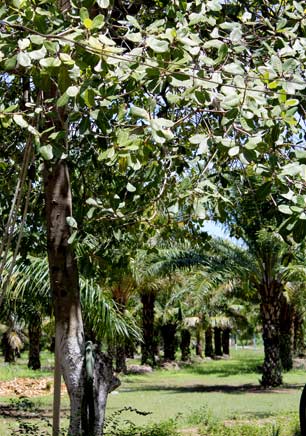 Biofuel plantations could double the monetary benefit for Mexico. The refined fuel can be exported, and the growing trees themselves may generate carbon credits. Through biosequestration, these African Palms take in carbon, which Mexico can then sell on the various carbon markets. (Photo: Jennifer Coute-Marotta)Biofuels are increasingly being viewed as a “green” source of energy as depleting oil and gas reserves are becoming harder to find and extract. Mexico plans to have 15 percent of its national demand for aviation fuels sourced from biofuels. Additionally, the country is laying the groundwork for a biofuel exporting industry. In Tapachula, an exporting city on the coast, a new industrial zone was created in which a biofuel refinery was recently built. It is sandwiched between a coffee packing plant and an oil refinery.
Biofuel plantations could double the monetary benefit for Mexico. The refined fuel can be exported, and the growing trees themselves may generate carbon credits. Through biosequestration, these African Palms take in carbon, which Mexico can then sell on the various carbon markets. (Photo: Jennifer Coute-Marotta)Biofuels are increasingly being viewed as a “green” source of energy as depleting oil and gas reserves are becoming harder to find and extract. Mexico plans to have 15 percent of its national demand for aviation fuels sourced from biofuels. Additionally, the country is laying the groundwork for a biofuel exporting industry. In Tapachula, an exporting city on the coast, a new industrial zone was created in which a biofuel refinery was recently built. It is sandwiched between a coffee packing plant and an oil refinery.
Mexico sees itself as a future leader in the fledgling “green” economy, and biofuel plantations could double the monetary benefit. Not only can the fuels be used and exported, the plantations themselves may be able to generate carbon credits. One ton of carbon “sequestered” in the palm trees as they grow would be equal to one carbon credit. The Mexican government could then sell those credits on the market to private entities interested in offsetting their carbon footprint. In an effort to spur this new economic frontier, Chiapas has been subsidizing farmers and landholders to plant African Palm or Jatropha plantations.
Accordingly, the villages surrounding Consuela’s are said to be contributing to climate change mitigation by converting their agricultural plots and forest tracts to biofuel plantations. California, which has an agreement with Chiapas to monitor its carbon credit-generating activities, is deciding on whether to accept them as legitimate offset credits in its cap-and-trade scheme.
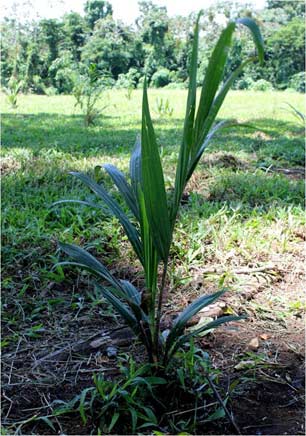 REDD protocol neither permits or denies monoculture plantations as acceptable projects for carbon credit generation. Yet, it most likely will. How is it that plantations of palm trees for oil production can be accepted under a mechanism designed to conserve forests of the Global South? (Photo: Jennifer Coute-Marotta)Truthout interviewed Anne Petermann, the executive director of Global Justice Ecology Project. GJEP is an organization researching the impacts of biofuels on indigenous populations in Chiapas. “The use of palm oil plantations as carbon offsets,” she said, “will allow the world’s biggest polluters to continue emitting greenhouse gases while pretending to mitigate them through offsetting. At the same time, communities that have traditionally cared for the land are being faced with forced evictions or economic pressure to convert their lands to biofuel plantations. Chiapas is yet another example of the dangers of putting too much emphasis on forest carbon offsets and biofuels as a means to mitigate climate change.”
REDD protocol neither permits or denies monoculture plantations as acceptable projects for carbon credit generation. Yet, it most likely will. How is it that plantations of palm trees for oil production can be accepted under a mechanism designed to conserve forests of the Global South? (Photo: Jennifer Coute-Marotta)Truthout interviewed Anne Petermann, the executive director of Global Justice Ecology Project. GJEP is an organization researching the impacts of biofuels on indigenous populations in Chiapas. “The use of palm oil plantations as carbon offsets,” she said, “will allow the world’s biggest polluters to continue emitting greenhouse gases while pretending to mitigate them through offsetting. At the same time, communities that have traditionally cared for the land are being faced with forced evictions or economic pressure to convert their lands to biofuel plantations. Chiapas is yet another example of the dangers of putting too much emphasis on forest carbon offsets and biofuels as a means to mitigate climate change.”
Such carbon credit-generating projects may soon find a home in an international climate change mechanism known as REDD (Reducing Emissions from Deforestation and Forest Degradation). REDD creates a financial incentive to conserve forests through the marketization of trees’ natural ability to store carbon as biomass. Originally taking the form of individual carbon offset projects, REDD is morphing into national government programs in the Global South as the World Bank, other multinational institutions and the United Nations funnel money toward their creation.
Currently, REDD protocol neither permits nor denies biofuel plantations as an acceptable option for carbon credit generation. It likely will, however, considering that the UN Framework Convention on Climate Change includes plantations under its definition of a forest and views them as legitimate offset projects for countries signed onto the Kyoto Protocol (the United States is not a signatory). But how can a monoculture plantation of African Palm be accepted under a practice, the mission of which is to conserve forests? Until the problems surrounding the definition of a forest are resolved and unequivocally deny monoculture plantations as fitting that definition, attempts to save the world’s forests will be subject to the interests of industry.
It is important to note that the European Union’s Emissions Trading Scheme does not permit such offsets because “[these] projects cannot deliver permanent emissions reductions.” Trees simply do not live forever.
Human-Induced Emissions: LULUCF
REDD attempts to reduce greenhouse gas emissions originating from a sector known by the acronym LULUCF. This sector covers emissions into and removals out of the atmosphere of greenhouse gases resulting from direct, human-induced Land Use, Land Use Change and Forestry activities. When forests are cleared for agricultural land or paper production, for example, the carbon stocks in the forests are released into the atmosphere. Conversely, reforesting land previously used for agriculture sequesters carbon in the trees as they grow. LULUCF accounts for at least 18 percent of all global greenhouse gas emissions. It is important to note, however, that this does not include emissions related to agricultural practices themselves, such as fertilizer use or methane release from livestock, both of which are covered under a sector called agriculture (and which accounts for roughly 13 percent of global GHG (Greenhouse Gas) emissions.
Within the state of Chiapas, LULUCF accounts for 61.74 percent of all greenhouse gas emissions. While the clearing of forest land for agriculture accounts for roughly 2,000 Gg (gigatons) of in-state CO2 emissions per year, conversion of forests to land for pasture accounts for 6,000 Gg of CO2 emissions per year. This is telling because, unlike indigenous subsistence farmers, ranchers are backed by large-scale agribusiness interests and generate revenue for the state.
As of the publication of this article, there are no known REDD projects subsidizing Chiapan ranchers to reforest their pastures or convert them to African Palm plantations. This is surprising when one considers the fact that Mexico’s first-listed “target” for 2020 is zero emissions related to land use change.
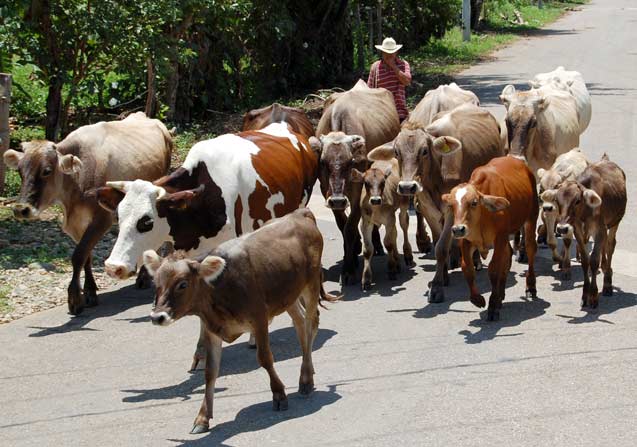 LULUCF accounts for 61% of all emissions in Chiapas, Mexico. 2/3 of them come from converting forests to make way for pastureland. However, there isn’t a single carbon offset project in Chiapas converting ranchlands to forests or biofuel plantations. (Photo: Jennifer Coute-Marotta)
LULUCF accounts for 61% of all emissions in Chiapas, Mexico. 2/3 of them come from converting forests to make way for pastureland. However, there isn’t a single carbon offset project in Chiapas converting ranchlands to forests or biofuel plantations. (Photo: Jennifer Coute-Marotta)
Truthout attempted to interview the financial director of Mexico’s REDD program, Mr. Jose Carlos Fernandez Ugalde. Although he initially agreed to answer e-mailed questions, none of them were returned with an answer. Mr. Ugalde declined to comment regarding whether biofuel plantations were intended to generate carbon credits and whether REDD projects were being developed for ranchlands. Since Mexico is still developing its overall national REDD strategy, it may not be known what projects its carbon credits are being generated from until they are placed on the market.
Like many other indigenous peoples in the state, Consuela believes Mexico’s national REDD program is designed to fold Chiapas’ indigenous populations into international markets, thereby “modernizing” the state. In this way, indigenous peoples, most of whom do not generate revenue for their governments, can become “productive members of society.” By agreeing to plant African Palms, Consuela believes indigenous farmers are effectively cut off from an identity based on the land they cultivate, the cyclical nature of agriculture and the maize seeds they once planted. “And besides,” she added, “what happens when the price of food goes up or the price of palm oil goes down?”
Wave of the Future
Truthout interviewed an agricultural scientist called “Juan Ignacio.” He insisted on a pseudonym and no photographs for this report because he didn’t feel comfortable speaking on the record about a new government program he was a part of creating. He is part of a team at an experimental agricultural site working to create more productive biofuel sources. Citing some drawbacks, he stated there is an abundance of biomass waste (i.e. carbon released back into the atmosphere through burning) from the cultivation of African Palm. Also, Jatropha, which produces very good quality oils, produces yields much too low to make it economically viable. “A farmer can make more selling black beans at the market,” he stated, “than by growing Jatropha for biofuels.” Yet, he maintained that biofuels are the wave of the future as fossil fuels are phased out as humanity’s primary source of energy.
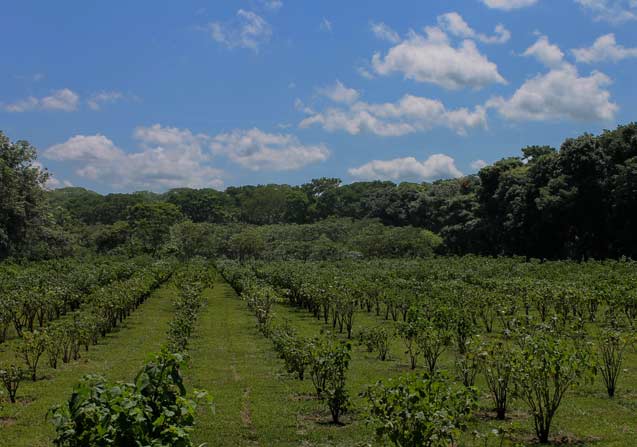 Government sponsored experimental plantation of Jatropha, located in Tapachula. Many indigenous farmers are opposed to plantations on grounds that it ruins their way of life. A moot point, says an agricultural scientist, because corn can be planted between the rows of trees. (Photo: Jennifer Coute-Marotta)
Government sponsored experimental plantation of Jatropha, located in Tapachula. Many indigenous farmers are opposed to plantations on grounds that it ruins their way of life. A moot point, says an agricultural scientist, because corn can be planted between the rows of trees. (Photo: Jennifer Coute-Marotta)
But are biofuels really that benign when compared to their petrochemical counterparts? While it is true that biofuels can significantly reduce the amount of carbon pollution when compared to fossil fuels within specific situations, they can easily be more detrimental to the environment. According to a 2009 report by the United Nations Environment Program, “[The] indirect impacts of biofuel production, like the destruction of natural habitats . . . to expand agricultural land, may have larger environmental impacts than the direct effects.”
Take, for example, Indonesia. It is the third highest emitter of carbon dioxide in the world, with roughly 90 percent of it coming from the LULUCF sector. It is the world’s largest producer of palm oil, supplying over 40 percent of the world’s market. Thousands of hectares of peat swamp forests, a forest type with one of the highest stores of carbon, are lost every year to make way for African Palm plantations.
A study published in 2008 in the Journal of Conservation Biology compared carbon emissions between biofuel use and the use of fossil fuels. The study found that if the biofuels were derived from peat swamp forests deforested to make way for African Palm plantations – as happens in Indonesia – it would take 692 years for the emissions saved from converting to biofuels to account for the emissions lost through the deforestation. While peat swamp forests are not present in Chiapas, Mexico, rainforests are. The same study found that it would take between 75 and 92 years for the deforestation of rainforests to be made up by the use of biofuels derived from those deforested lands. Neither of these statistics accounts for other emissions in the life cycle of palm oil, such as the environmental costs of shipping or those released through their actual use.
Additionally, African Palm is economically productive for about 25 years. After that, the trees have to be cut down and new ones planted, thus releasing the carbon they sequestered over the production period. Also, as Consuela noted in our interview, the farmers who agree to grow palms are more dependent on food sources from outside the area, as they no longer make their own tortillas or grow their own vegetables. That, and the newly created dependence on industrial fertilizers and pesticides work to both reduce the amount of net CO2 reductions and destroy a way of life.
We Want Out
Besides their environmental impacts, monoculture plantations of palm oil, or any other crop, have social impacts as well. Consuela is opposed to biofuel plantations on grounds that they ruin the environment and a way of life. Yet, Juan Ignacio believes that opposition to biofuel plantations based on the preservation of an indigenous identity is a moot point. Through intercropping, or the growing of foodstuffs between rows of African Palm, the identity of indigenous farmers can be preserved while at the same time offering a source of income that could lift them out of poverty. The issue is made worse, though, he asserted, because the Mexican government is not explaining intercropping, or at least the extent of opportunity it could bring to the indigenous people who are presented with a contract to convert their lands to plantations for biofuels.
Consuela, again, had a different story to tell. When presented with an unsigned contract by the Mexican government to grow African Palms, intercropping is, in fact, explained to the farmers. It is described as an integral part of the cultivation cycle. Consuela was told she’d be able to plant corn and vegetables, while at the same time adding a new source of income for her family. The planting of African Palm was portrayed as all gain and no loss by representatives of her government.
When the African Palms start growing, there is plenty of space between the rows. Farmers receive the subsidy while at the same time growing their own food. But after a few years, the palm trees grow high and the crowns fill out enough to block sunlight from sufficiently reaching the crops growing in between. The lack of sunlight, along with the degradation of the soil through intense chemical use, makes it so their crops can no longer grow.
Consuela told Truthout about a man from a neighboring village who, after realizing that intercropping was not a feasible option, decided to burn down his African Palm plantation. He was arrested, charged with breaking his contract and put in jail. It was only through the arrest and court proceedings that he learned his plantation was generating carbon credits. He had never heard of the carbon market before. Now, as other farmers are realizing the same things, they wonder what they’re going to do. Many wished they hadn’t entered into the contract, but at the same time, they don’t want to go to jail. They feel they’ve been tricked, and they want out.
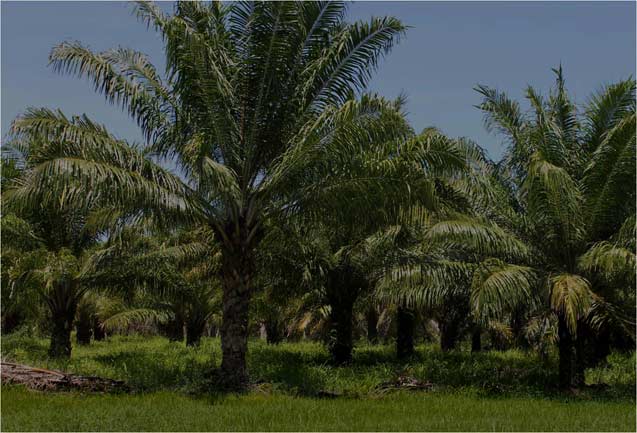 An indigenous farmer destroyed his plantation when he realized the palms destroy his soil and prevent the growing of corn and vegetables. He was arrested and, only through court proceedings, learned of his plantation generating carbon credits for the Mexican government. (Photo: Jennifer Coute-Marotta)
An indigenous farmer destroyed his plantation when he realized the palms destroy his soil and prevent the growing of corn and vegetables. He was arrested and, only through court proceedings, learned of his plantation generating carbon credits for the Mexican government. (Photo: Jennifer Coute-Marotta)
According to REDD protocol, people participating in the generation of carbon credits are supposed to be fully informed of what they are doing, and why. It is a human right dedicated specifically to indigenous peoples, and is called Free, Prior, and Informed Consent. It is based on the basic premise that we all have a right to decide what happens on our own lands and, as indigenous peoples often inhabit lands rich in natural resources and traditionally engage in collective ownership and decision-making practices, it is especially important for them to be protected. Yet, by failing to be educated on the carbon market and by inaccurately being informed of the practical consequences of entering into the contract, the human and indigenous rights of the people of Marques de Comillas have been violated.
But as long as there is a market for carbon credits, indigenous people like those surrounding Consuela’s village will continue to lose out. As long as societies in the Global North continue to seek offsets for their carbon footprint, instead of learning ways to reduce it, communities in the Global South will continue to be forced into changing their way of life for the sake of “sustainable development.” And this will continue to happen regardless of the dubious effectiveness of these projects in the mitigation of climate change.
The foresight of Consuela’s village paid off, but it’s surely a small consolation as they watch their neighbors lose their land and indigenous identity for the sake of those who pollute the Earth at vastly higher proportions than they.
Join us in defending the truth before it’s too late
The future of independent journalism is uncertain, and the consequences of losing it are too grave to ignore. We have hours left to raise the $12,0000 still needed to ensure Truthout remains safe, strong, and free. Every dollar raised goes directly toward the costs of producing news you can trust.
Please give what you can — because by supporting us with a tax-deductible donation, you’re not just preserving a source of news, you’re helping to safeguard what’s left of our democracy.